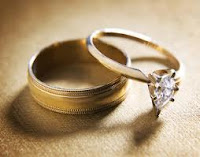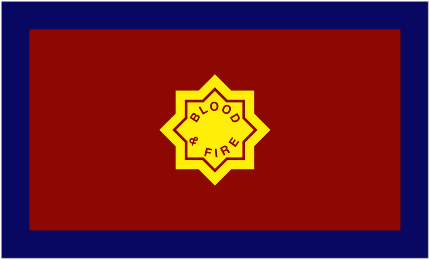As time went on, we dropped a few traditions here and there, because we saw the roots of some things as being Pagan. Usually though, it was simply our skeptical, out-of-the-box thinking that made us just question, "why is this necessary?" Or "Who even needs to make a fuss out of one day (a Holiday) over another average day?" (We even had a Bible verse for that conviction, as well as avoiding a decorated Christmas tree.)
I even wrote an article about the Pagan celebration of Easter and where the painted egg and bunny and even the name "Easter" came from. . .my intention was to someday publish my work for all those "naive" Christians out there who ignorantly still believed Easter was merely the celebration of Jesus's Resurrection day. I think I'll leave that to someone else now though.
Did you know that many Holidays and their symbols
are"pagan" in their roots?
Christmas for instance. The origin of the wreath, holly, mistletoe, the decorated tree, Christmas colors, the caroling, and gift giving are all pagan.
Also the origin of Halloween dates back 2000 years ago to an Celtic celebration. The celebration included burning sacrifices and dressing in costumes to honor the dead ancestors. (Ironically, I had a dear Grandma die on Halloween, so if anyone has a reason to celebrate it, I do.) The Pope changed it to be a celebration honoring all Saints along the way. Halloween history in America was also very much influenced by Irish immigrants.
The Irish brought the tradition of carving turnips and even potatoes with them to America. (They quickly discovered that pumpkins were bigger and easier to carve.) Bobbing for Apples at Halloween is a tradition widely popular a few decades ago. It dates back to ancient roman times in honor of the Roman goddess of fruits and apples. The first lighted fruit was really carved out of gourds and turnips. European custom also included carving scary faces into the gourds and placing embers inside to light them. This was believed to ward of evil spirits, especially spirits who roamed the streets on that night. People are still scared of witches as well as KKK members on that night, as there has historically been some weird activity linked to them and young girls vanishing on that night. Who knows how much of the fear is simply because of the hysteria built up, but even when staying home one Halloween, some of my own family members claimed to have heard what they took as a Ghost of a recently departed Grandfather. (Mind you, his departing words were, "I'm going to come back and haunt you." So that may have been enough to plant the expectation, and have a nice placebo effect. . .) Anyhow for years my family took no part in the celebrations of Halloween, while minimizing Christmas, Easter, and numerous other holidays. . .
Pagan traditions are found stemming from a lot more then Holidays though!
I want to know why the Christian's use gold rings to solidify their vows when it also was a pagan tradition? (Check out my link if you want some interesting history on that.) For a while I actually gave up my heirloom ring to a friend, so she could get married, sooner. Knowing about that, I had previously removed my ring for years anyways, so I figured she might as well wear it as anyone.
Want to know why the Bride is suppose to wear a veil at her wedding? There is a legend that the wedding veil conceals the bride from demons. Apparently the superstition was so strong that families even supplied bridesmaids as decoys. These maids would not wear veils but would be dressed attractively and prepared to sacrifice their souls if required. As well, the mock bride (the flower girl) and the mock groom, (the ring bearer) were a distraction. From the stuff worn by the bride, ("something borrowed something blue, something old something new") to the traditions of throwing rice, and shoes dangling from the get away car, wedding traditions are full of superstitions!
Superstitions and traditions were always intertwined in every ancient culture's religions. Some are harmless, some silly, some dangerous! With the harmless ones are the symbols in traditions of Christianity. It is interesting to see the origins of many religious symbols I use to believe were original to Christianity, (but like the rest of Christianity, they had their origin in a previous religion).
The Cross for instance, is used freely in heraldry, by Freemasons, and by Pagans still today. It has been found in China and Africa. It appears on Scandinavian Bronze Age stones depicting the destructive hammer of Thor, their god of thunder and war. It is regarded a magical symbol, bringing good luck and diverting evil. Rock carvings of the cross have been interpreted as a solar symbol, or a symbol of earth with its points representing north, south, east, and west. To alchemists, the cross was a symbol of the four 'classical elements': air, earth, fire, water. Elsewhere, the cross variously symbolized health, fertility, life, immortality, the union of Heaven and earth, spirit and matter, the Sun and the stars.
Some people have written articles supporting their firm belief that Christianity is actually a Pagan form of sun worship, as they felt that the Sun was the most powerful God back then. In Christian images, the sun appear in halos.
|
The sun is also clearly seen on the original flag of the evangelical Christian church, the Salvation Army |
Images of the Virgin Mary often show her heart, or baby Jesus, radiating like the sun.
And to 'prove' Christians are really Sun-worshippers, let's remember what day of the week Christians worship on. . . even though they had every reason to worship on the Sabbath, or Saturday.
Another symbol stolen from the past was the fish. Strangely enough it had its roots in pagan fertility awareness and sexuality. Along with being a reproductive spirit in mythology, the fish also has been identified in certain cultures with reincarnation and the life force. Well before Christianity, the fish symbol was known as "the Great Mother," a pointed oval sign, the Vessel of the Fish. "Fish" and "womb" were synonymous terms in ancient Greek. Its link to fertility, birth, feminine sexuality and the natural force of women was acknowledged also by the Celts, as well as pagan cultures throughout northern Europe.
As well as copying many symbols, Christianity was modeled on many customs that were familiar and acceptable to the Jews and Pagans at that time, just as many old church hymns we still sing started as familiar bar tunes of the past. Words like "God", "Amen" and"Halo"were also recycled from other religions of the time as well.
Circumcision was another tradition I had believed to have originated with Christianity, but it was actually recycled from another religion as well. New evidence now tells us it originated much further back in Egypt, among the nobility. Abraham may have gotten the idea from the time he spent in Egypt with the nobility, who believed there to be a medical benefit to it at the time. . .
(More on this in a later post when I get into crossovers in religions. . .)
So what does this mean to the significance of religion today? Well, if you have respect for the ancient greek gods and goddesses, are into throwing salt over your shoulder for luck and being careful around black cats, you might also be comfortable in the traditions of the ancient religions in their circumcising their children, (boys and girls too in many groups) the sexist and abusive practices of woman's inequality and the ostracizing and shunning of people who think, look or act differently then yourself. (Many of which we still see today in the sincere Christians who follow the literal, as well as historical understanding of the Bible.)
If, on the other hand, you feel that the practices of yesteryear were in the dark ages- just a tad- (and were NEVER good, but classic of their culture and the superstitions of it) it may lead you to question the validity of your source (The Bible) as being inspired and still applicable to our enlightened culture. Maybe (could it be?!) that it's just another of the many ancient classic books we look to now as important in their time, but just as outdated as any scientific or medical book of the same time. If the Bible just stuck to the wisdom of conquering our own nature (which we all struggle with at times) and philosophy, it might still be a respected book by all. After seeing how following it's advice on marriage, parenting, as well as it's take on history and Astronomy has led us astray, as well how it teaches the poor morals of sexism, and racism, not to mention bigotry, etc. . .many are rapidly turning away from using it at all!









This comment has been removed by a blog administrator.
ReplyDelete